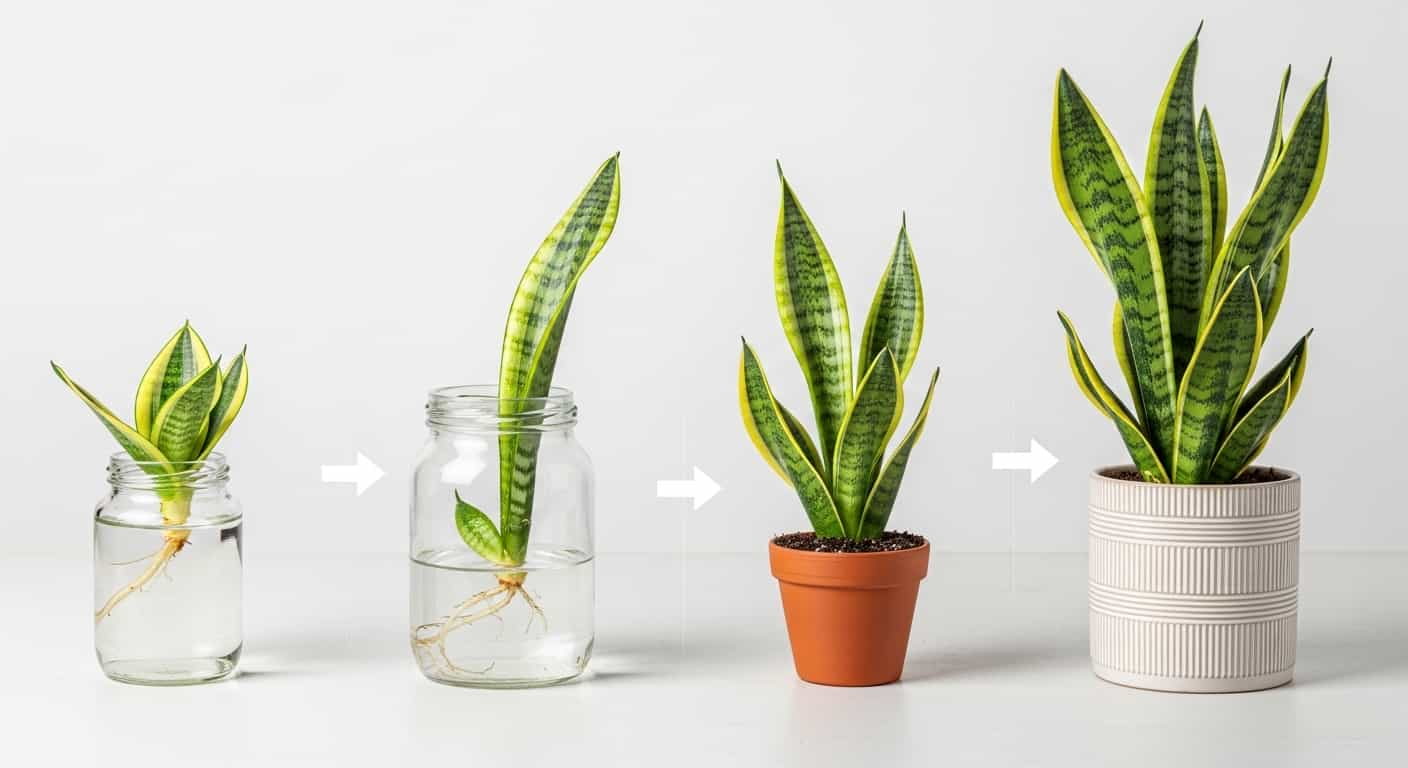Snake plants, with their striking upright leaves and incredible resilience, are a cornerstone of modern indoor gardening. They seem to thrive on their own terms, growing slowly and steadily without much fuss. But have you ever wondered what’s really going on beneath the surface? How fast should a snake plant grow, and what does its journey from a tiny pup to a full-sized specimen look like?
Understanding the snake plant growth rate is key to providing the best care and setting realistic expectations. These plants are not sprinters; they are marathon runners, and their slow, deliberate growth is part of their charm. Knowing their pace helps you spot potential problems early and make adjustments to keep them healthy for decades to come.
This guide will explore the fascinating snake plant growth stages, from a newly propagated leaf to a mature, thriving clump. We’ll break down the factors that influence how quickly they grow and offer practical tips to help you optimize their development.
What is the Typical Snake Plant Growth Rate?
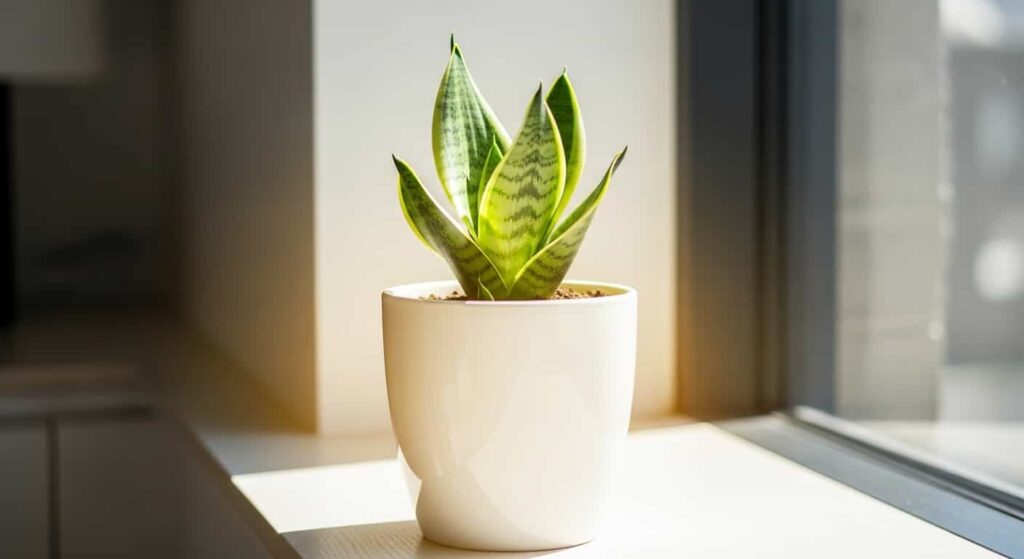
One of the first things new owners notice is that snake plants are not fast growers. Their growth is often described as slow and steady. Under typical indoor conditions, a healthy snake plant might only produce 2-4 new leaves per growing season (spring and summer).
This slow pace is a feature, not a bug. In their native habitats in Africa, they are adapted to survive in harsh conditions with infrequent water and nutrient-poor soil. They conserve energy by growing methodically. This makes them perfect for people who don’t want a plant that will quickly outgrow its space.
However, the snake plant’s growth rate is not set in stone. It is heavily influenced by its environment. Several key factors can either speed up or slow down its development.
- Light: This is the most significant factor. A snake plant in a low-light corner may only produce one new leaf a year, or none at all. A plant in a spot with bright, indirect light will have more energy for photosynthesis and will grow noticeably faster.
- Water: Consistent, proper watering during the growing season encourages growth. Overwatering will lead to root rot and halt growth entirely, while chronic underwatering will force the plant into survival mode, stunting its development.
- –Temperature and Season: Snake plants do most of their growing in the warmer months of spring and summer. They enter a semi-dormant state in the fall and winter, and growth will slow down considerably or stop altogether.
- Pot Size: A snake plant in a large pot will focus its energy on expanding its root system to fill the space. A slightly root-bound plant is more likely to put its energy into producing new leaves and pups.
- Age and Maturity: Young plants and newly propagated cuttings will grow faster as they work to establish themselves. Very old, mature plants may slow down their leaf production.
The Journey: Snake Plant Growth Stages
A snake plant’s life is a long and fascinating journey. Whether you start with a single leaf cutting or a small nursery plant, it will pass through several distinct stages.
Stage 1: Propagation and Rooting (Weeks to Months)

This is where the journey begins for many. A snake plant can be propagated from a single leaf cutting or by dividing a larger plant.
- Leaf Cuttings: A healthy leaf is cut into sections and placed in water or soil. During this stage, all the energy is focused below the surface. The cutting will first form a callus over the cut end, and then tiny roots and rhizomes will begin to develop. This process can take anywhere from a few weeks to several months. You won’t see any top-side growth during this time.
- Division: When you divide a mature plant, you separate a “pup” (a new shoot) that already has some roots of its own. This method has a head start, as the root system is already partially established.
Stage 2: The Emergence of Pups (Months 2-6)
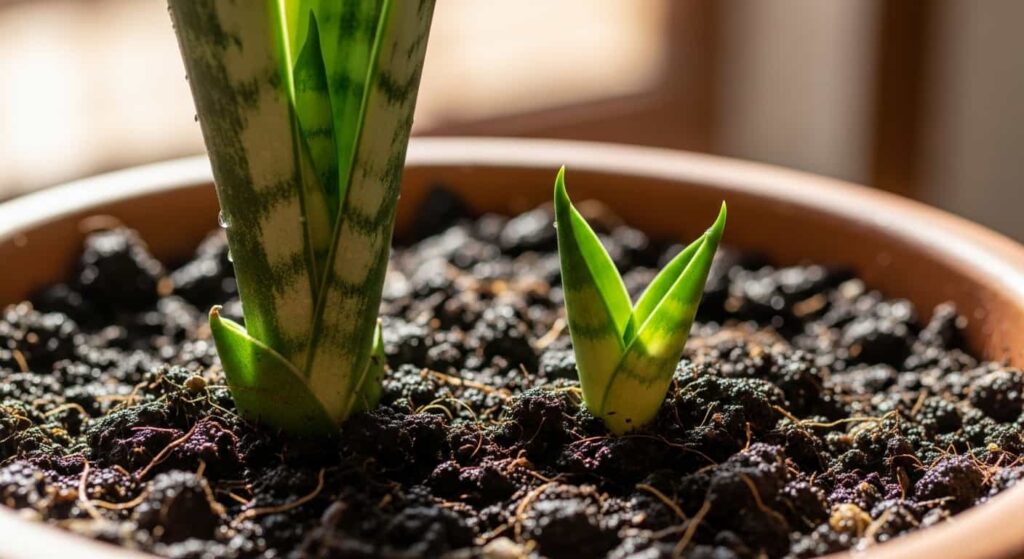
Once a cutting has developed a healthy root system and a rhizome, it will begin to send up a new shoot, known as a pup. This is a thrilling moment for any plant propagator. A tiny, pointed green tip will break through the soil near the base of the cutting. This new pup is the beginning of a brand-new plant and will grow much faster than the original parent leaf cutting.
Stage 3: Juvenile Growth (Year 1-3)
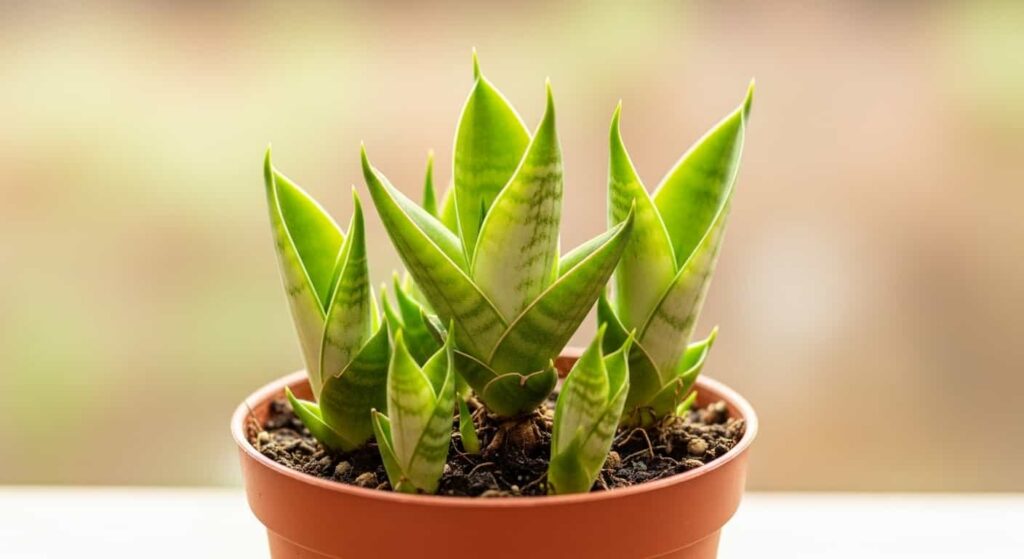
During this stage, the young snake plant focuses on establishing itself. The initial pup will grow, and the plant will send out more rhizomes under the soil to produce more pups. This creates the classic clumping look that snake plants are known for. The leaves produced during this juvenile phase are typically smaller and grow faster than those on a fully mature plant. The plant is actively expanding its footprint and building a robust root and rhizome network.
Stage 4: Mature Growth (Year 3+)

After several years, the snake plant reaches maturity. At this stage, it has a well-established rhizome system and a full, dense cluster of leaves. The new leaves that emerge will be larger and may exhibit more vibrant coloration and patterning than the juvenile leaves.
A mature plant’s growth will seem to slow down because its energy is divided between maintaining its existing leaves, producing larger new leaves, and potentially preparing for a rare blooming event. A healthy, mature snake plant can continue to produce new leaves and pups for decades.
Is Your Snake Plant Not Growing? Common Issues and Fixes
If you’re concerned that your snake plant is not growing, it’s time to do some detective work. Most growth issues are related to the plant’s environment.
Issue: Why is my snake plant not growing at all?

If months have passed with zero new growth, especially during spring or summer, review these factors:
- Low Light: This is the most common reason for stalled growth. The plant may be surviving, but it doesn’t have enough energy to produce new leaves.
- Fix: Move the plant to a brighter location with plenty of indirect sunlight.
- Wrong Season: Snake plants naturally go dormant in the fall and winter. Don’t expect much, if any, growth during this time.
- Fix: Be patient and wait for spring.
- Root Rot: If the plant is overwatered, its roots may rot. An unhealthy root system cannot support new growth.
- Fix: Check the roots. If they are mushy and brown, trim the rot, and repot in fresh, dry, well-draining soil.
Issue: My snake plant is growing sideways.
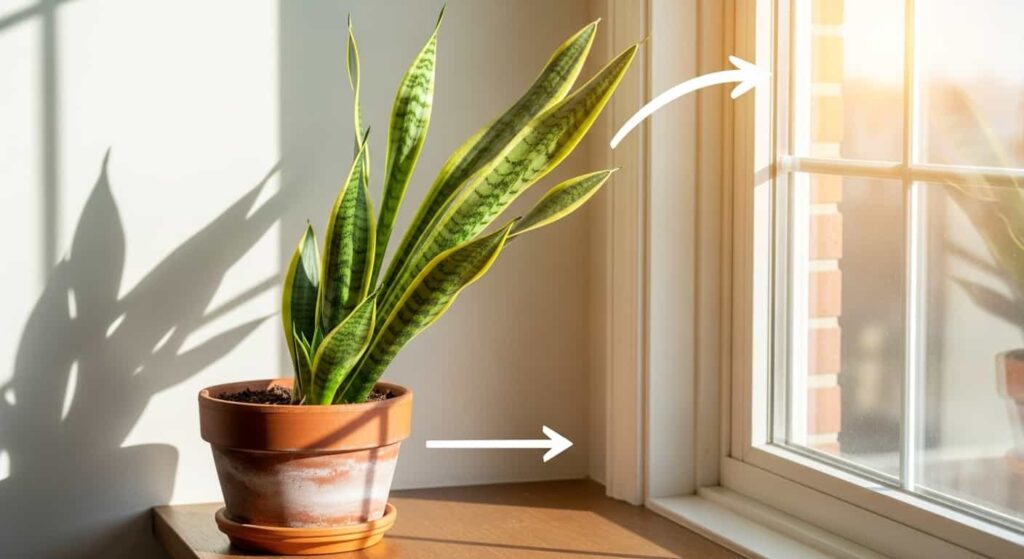
Sometimes a snake plant will produce pups that cause the whole plant to lean or appear to be snake plant growing sideways.
- Cause: This is often a result of the plant reaching for a light source or the rhizomes spreading in one particular direction.
- Fix: Rotate your plant every few weeks to encourage even growth. You can also prune off pups that are causing an imbalance and propagate them to start a new plant. If the leaning is severe, repotting the plant to be more centered can also help.
Tips for Optimizing Snake Plant Growth
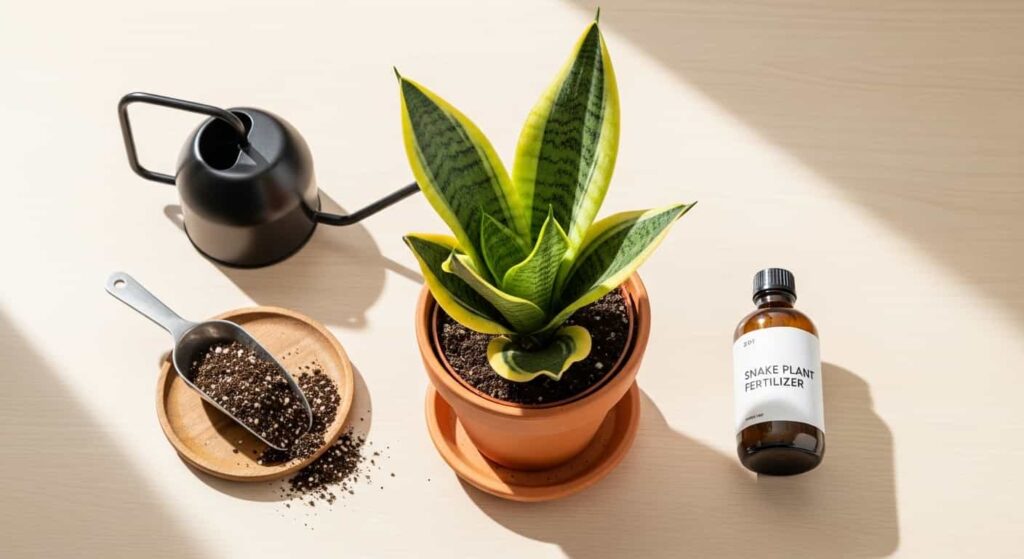
While you can’t turn a snake plant into a fast grower, you can create the perfect conditions for it to grow as healthy and efficiently as possible.
- Provide Bright, Indirect Light: This is the single best thing you can do to encourage growth. More light equals more energy for producing leaves.
- Water Correctly: Water thoroughly when the soil is 100% dry, and then let it be. This consistent cycle supports healthy root function.
- Use the Right Pot and Soil: A well-draining cactus or succulent mix is essential. Choose a pot that is snug, as snake plants prefer to be slightly root-bound.
- Fertilize Lightly: During the spring and summer, you can give your snake plant a boost with a half-strength, balanced liquid fertilizer once a month. Do not fertilize in the winter.
Appreciating the Slow and Steady Pace

The journey of a snake plant is one of patience and endurance. Its slow growth is a reminder that good things take time. By understanding its natural pace and providing the right care, you can watch your plant transform from a single leaf into a magnificent, multi-generational clump. Embrace the slow, steady rhythm of your snake plant, and you’ll be rewarded with a beautiful, low-maintenance companion that will grace your home for a lifetime.
Frequently Asked Questions About Snake Plant Growth
How long does it take for a snake plant to grow to full size?
“Full size” is relative, as a snake plant will continue to produce pups and expand its clump indefinitely. However, a single leaf can reach its mature height in 2-3 years under optimal conditions. A small nursery plant can grow into a dense, mature-looking clump in about 3-5 years.
How do you make a snake plant grow pups?
Healthy, mature snake plants will produce pups naturally. The best way to encourage this is to provide optimal conditions, especially bright, indirect light. A slightly root-bound plant is also more likely to send out pups.
Can you control the height of a snake plant?
You cannot stop a leaf from reaching its genetically predetermined height. However, if a particular leaf grows too tall for your space, you can prune it. Be aware that the cut leaf will not grow any taller, but the plant will continue to produce new leaves from the base.

